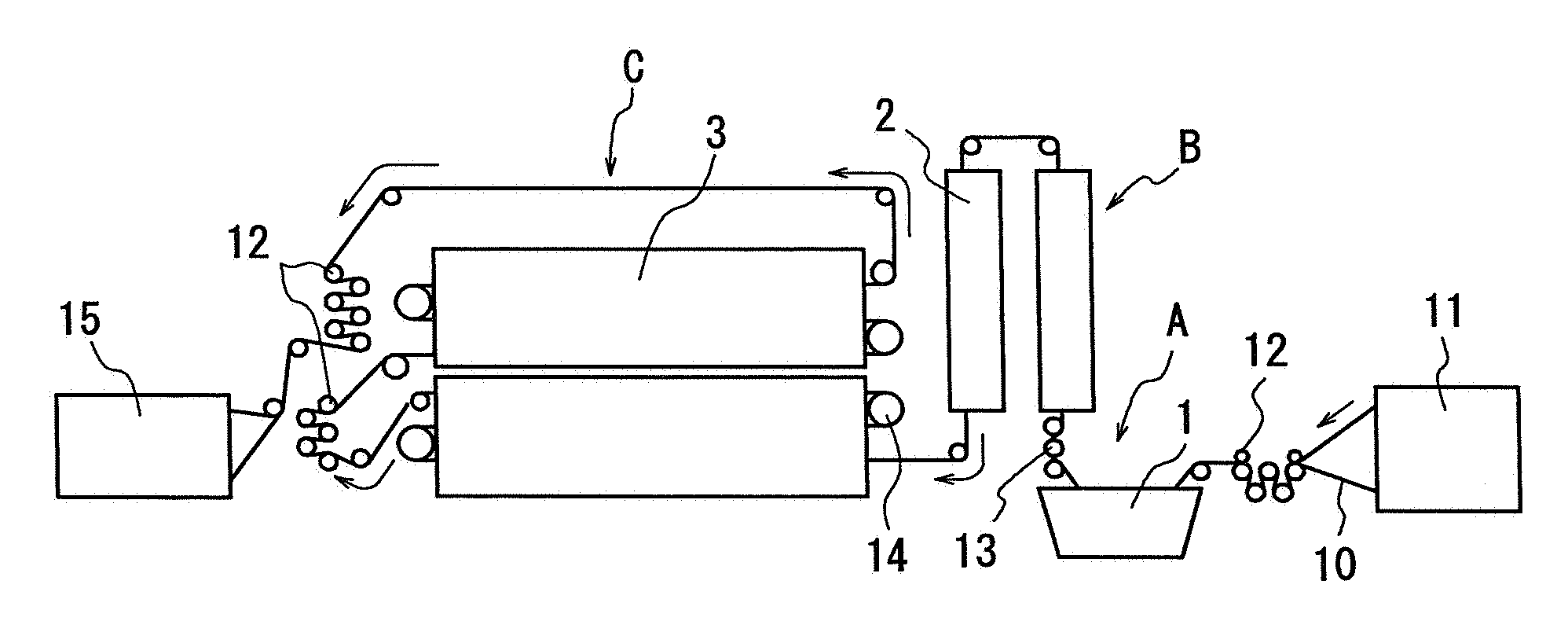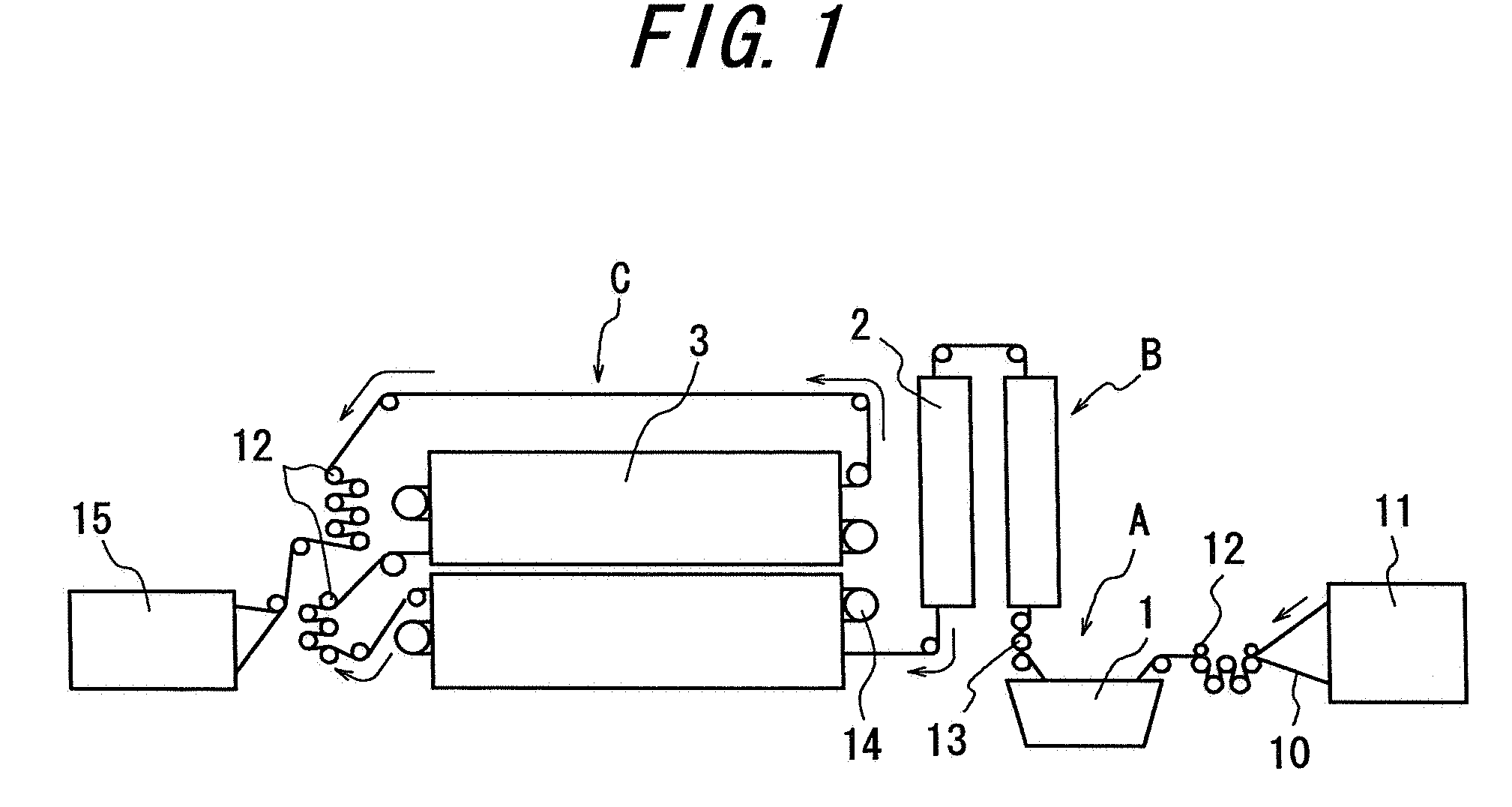Method for modifying organic fiber cord
a technology of organic fiber and dipped cord, which is applied in the field of modifying organic fiber cord, can solve the problems of reducing the productivity of the industry, affecting the quality of the product, so as to achieve the effect of reducing the amount of scrap, and reducing the cost of production
- Summary
- Abstract
- Description
- Claims
- Application Information
AI Technical Summary
Benefits of technology
Problems solved by technology
Method used
Image
Examples
examples
[0034]The invention will be described in detail with reference to some examples below.
examples 1-7
[0035]In the modifying equipment having the construction shown in FIG. 1, the organic fiber cord is subjected to a modification treatment by using the following apparatus and the treating conditions (exposure time) shown in Tables 1-3, respectively.[0036]Dipping step (A): Dipping bath 1 (together with a vacuum apparatus)[0037]Drying step (B): Microwave generator 2 (TMG-490C (water-cooling type) manufactured by Shibaura Mechatronics Corporation, wavelength: 2450 MHz, output power: 5 kW / m) (together with a hot air generator)[0038]Heat-treating step (C): Far-infrared heater 3 (output power: 32 kW / m) (together with a circulation fan)
examples 8-11
[0043]In the modifying equipment having the construction shown in FIGS. 2 and 3, the organic fiber cord is modified by using the following apparatus and the heat-treating conditions (exposure time) shown in Tables 4 and 5, respectively.[0044]Dipping step (A): Dipping bath 1[0045]Drying step (B): Steam heater 5[0046]Heat-treating step (C): Far-infrared rays-treating furnace 4 comprising a hot air generator, a circulation fan and ceramic plates (see FIG. 3, but the circulation fan is not shown therein.)
PUM
| Property | Measurement | Unit |
|---|---|---|
| Thermal shrinkage factor | aaaaa | aaaaa |
| Thermal shrinkage factor | aaaaa | aaaaa |
| Thermal shrinkage factor | aaaaa | aaaaa |
Abstract
Description
Claims
Application Information
 Login to View More
Login to View More - R&D
- Intellectual Property
- Life Sciences
- Materials
- Tech Scout
- Unparalleled Data Quality
- Higher Quality Content
- 60% Fewer Hallucinations
Browse by: Latest US Patents, China's latest patents, Technical Efficacy Thesaurus, Application Domain, Technology Topic, Popular Technical Reports.
© 2025 PatSnap. All rights reserved.Legal|Privacy policy|Modern Slavery Act Transparency Statement|Sitemap|About US| Contact US: help@patsnap.com



